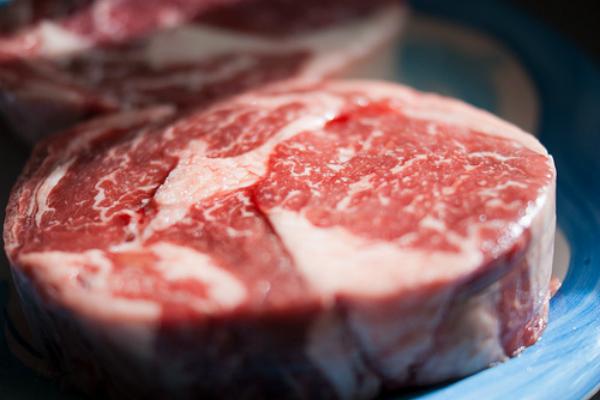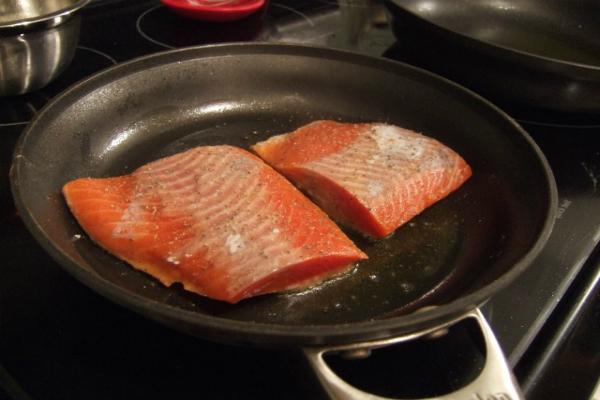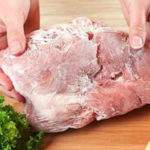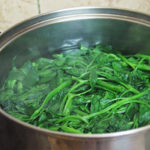Properly Clean the Pan
Issue:
After cooking, your pan is often left with greasy stains and food residue. Typically, you would wash the pan by applying soap, scrubbing it with a sponge, rinsing with hot water, and drying with a paper towel. However, this cleaning method can gradually damage the protective non-stick coating on the pan’s surface. This coating not only helps prevent rust but also improves the interaction between the food and the pan. In essence, this cleaning habit is detrimental to your non-stick pan.
Solution:
Instead of using soap and water, try the following method. After cooking, pour some oil onto the pan, sprinkle salt over it, and gently rub the salt around the pan using a rag. Rinse the pan with water and dry it with a paper towel. The salt will effectively pick up the dirt, leaving your pan clean and preserving its non-stick coating.
 Cleaning the pan with soap is not necessarily a good thing
Cleaning the pan with soap is not necessarily a good thing
pan style=”line-height: 1.2;”>Defrost Meat Properly
Issue:
There may be instances when you hurriedly leave a piece of frozen meat on the table to defrost while you go out, only to process it upon your return. However, this practice compromises the safety of your food.
The favorable temperature range for bacteria growth is between 5°C – 60°C, and room temperature typically falls between 20°C – 30°C. When you leave the meat at room temperature for a few hours, it does defrost, but it also provides ample time for bacteria to become active.
Solution:
A quick and efficient defrosting method involves pouring a cup of cold water over the meat or letting the meat soak in a bowl of cold water. If you need to soak the meat for an extended period, remember to change the water every half an hour to ensure its temperature does not reach room temperature. This way, the meat defrosts rapidly and becomes ready for immediate preparation.
 Meat should not be defrosted at room temperature
Meat should not be defrosted at room temperature
Avoid Overcrowding the Pan
Issue:
When in a hurry or feeling lazy, it is common to put a large amount of food in the same pan, resulting in a cramped cooking space. This leads to unevenly cooked dishes, where some pieces may remain raw or burnt, compromising the overall taste and quality.
Solution:
To ensure even cooking and faster processing time, separate and process smaller portions of food at a time. This allows for a more consistent and efficient cooking process.
 Cooking too much food at once makes the food tasteless
Cooking too much food at once makes the food tasteless
Maintaining the Right Cooking Temperature
Issue:
Cooking at the wrong temperature can result in undercooked or overcooked food. While using high heat may seem like a shortcut for quicker cooking, it often leads to food that is only cooked on the outside, leaving the inside insufficiently cooked. On the other hand, cooking at low temperatures prolongs the cooking process and can cause the loss of nutrients and flavor in the food.
Solution:
To ensure precise temperature control, it is recommended to use appliances such as stoves, ovens, or induction cookers. These devices allow for easy temperature adjustments according to specific cooking requirements. It is advisable to refer to the temperature ratings in recipe instructions when preparing unfamiliar dishes and follow them accordingly.
 Cooking at the wrong temperature causes food to not cook evenly
Cooking at the wrong temperature causes food to not cook evenly
Add Oil to a Properly Heated Pan
Issue:
Inexperienced or impatient individuals often pour oil into a pan immediately after turning on the stove. However, cooking food when the pan is not adequately heated leads to food sticking to the pan or results in improperly seared edges.
Solution:
To remedy this mistake, it is recommended to wait until the pan is adequately heated before adding oil. A helpful tip is to step back and count from 1 to 100 after feeling the pan’s heat, and then proceed to add the oil. This advice comes from Tim Cebula, a renowned culinary expert.
 You should add oil when the pan is hot enough for the food to be delicious
You should add oil when the pan is hot enough for the food to be delicious
During the cooking process, you may encounter various mistakes that can affect the taste and nutritional value of your dishes. Sharing these tips will help everyone learn how to avoid and correct these errors.
Methods for Thawing Meat Quickly Without Compromising Taste
 Meat Quickly Without Compromising Taste’>
Meat Quickly Without Compromising Taste’>Do you want your meat to be perfectly thawed without sacrificing the taste or nutritional value? This article has the answer to your dilemma – learn the best techniques to thaw your meat quickly and safely.



































